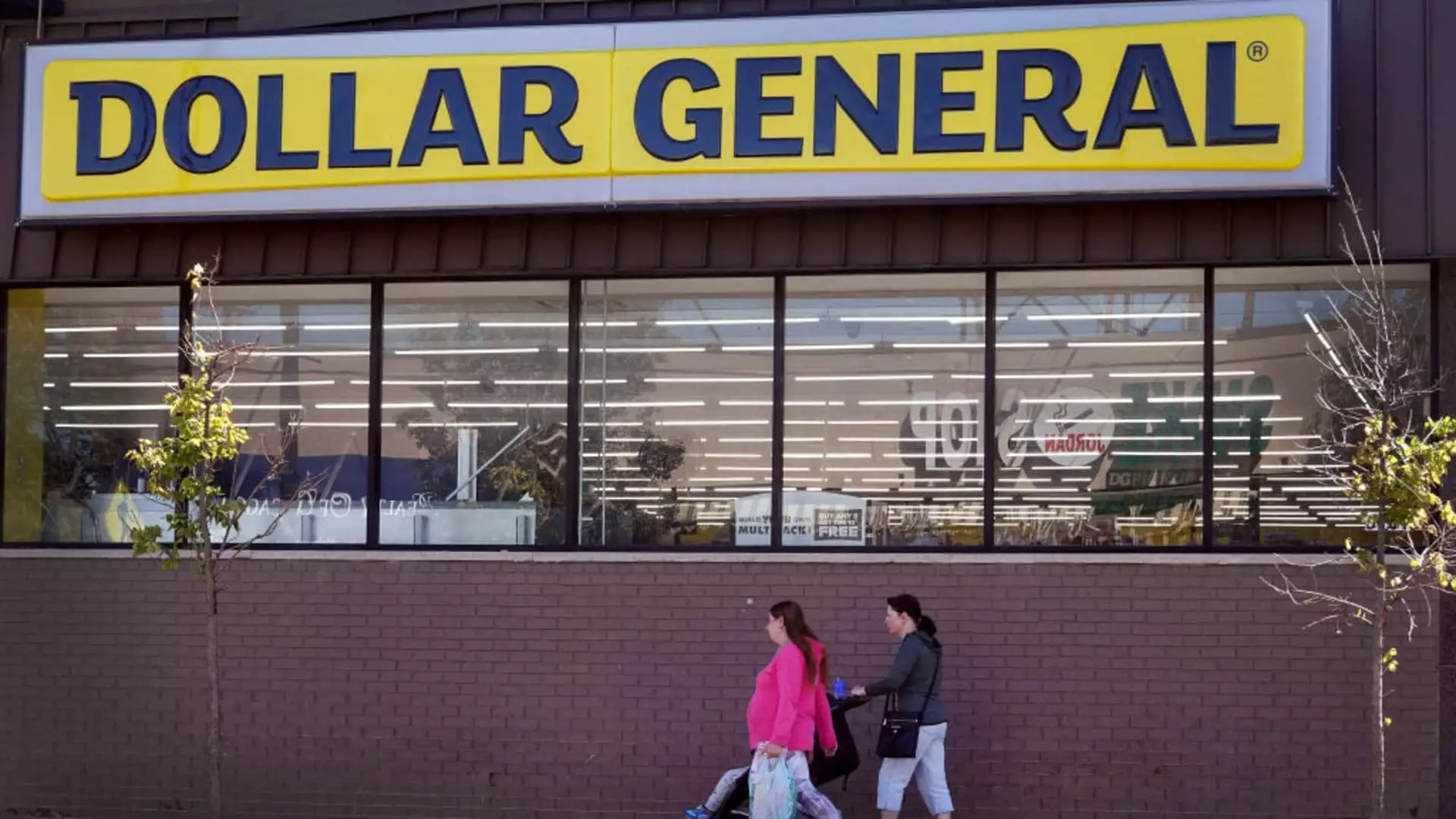Tesla, the electric vehicle giant, is no stranger to the volatility of stock markets. Recently, its shares plunged over 4%, capturing the attention of investors and analysts alike. This drop comes on the heels of a tumultuous couple of trading sessions where Tesla’s stock rose sharply after suffering its worst single-day decline since 2020. The electric vehicle market is notorious for its fluctuating valuations, but Tesla’s recent performance serves as a stark reminder of the fragile nature of hype-driven stock prices. The general public’s fascination with the “next big thing” in clean energy often overlooks fundamental aspects, leaving stakeholders vulnerable to shocking downturns.
American Eagle’s Predictable Decline
On the retail front, American Eagle Outfitters has announced a dismal forecast, expecting a mid-single-digit sales dip in the first quarter. Traders were caught off guard as this outlook stood in stark contrast to analysts’ predictions of a modest increase. A company that had previously enjoyed a steady rise now finds itself struggling against the tides of economic uncertainty; its survival hinges on reconnecting with consumers in an increasingly competitive landscape. As the brand struggles to keep pace with changing consumer preferences, one has to question whether this is a mere blip or part of a larger trend signaling a downturn for traditional retailers.
Dollar General’s Bargain Triumph
In contrast to American Eagle, Dollar General’s stock surged over 3% following a robust fourth-quarter performance that exceeded expectations. The discount retailer reported a revenue of $10.30 billion, which notably surpassed analysts’ forecasts. The success story here encapsulates the resilience of discount retailers, exemplifying how changing economic conditions can lead consumers to prioritize savings above brand loyalty. The stock market has notoriously favored “affordable luxuries” over mainstream brands in times of economic pressure, and Dollar General’s ascent could be indicative of broader socioeconomic trends that delineate consumer behavior.
Intel’s New Leadership: A Beacon of Hope
Intel’s stock reacted positively, soaring 14% after the announcement of Lip-Bu Tan as the new CEO. While the technology sector has faced significant headwinds, this leadership change may offer a fresh perspective and renewed hope for a company attempting to regain its footing in a rapidly advancing industry. Shareholders are understandably cautious; yet, the optimism surrounding this appointment signals a desire for innovation and strategic recalibration. In a sphere dominated by relentless competition, Intel’s ability to adapt is more crucial than ever.
Ulta’s Upcoming Challenge
As for Ulta Beauty, expectations are running high ahead of its earnings report, yet analysts anticipate a 4.9% decline following a challenging market outlook. The cosmetics industry has seen both growth and decline, and while Ulta boasts of its loyal customer base, it must navigate an evolving landscape where consumer tastes fluctuate with alarming rapidity. If Ulta fails to surprise its investors positively, this stock may face a significantly steeper fall than anyone anticipates.
Adobe’s Dismal Forecast
Adobe’s recent 14% price drop casts a shadow over the once-thriving creative software empire. A lackluster second-quarter forecast has prompted serious questions about the company’s ability to innovate and maintain relevance in an ever-competitive digital landscape. Analysts predict earnings will fall short of expectations, highlighting how even the most prominent players can succumb to market pressures. This unfortunate turn serves as a warning: complacency in tech is lethal, especially in a world where disruption occurs at breakneck speed.
UiPath’s Disappointing Outlook
UiPath, another company facing a tough battle, saw its shares tumble 14% after reporting subpar revenue. This decline, attributed to heightened economic uncertainty, reflects the challenges many software companies encounter in delivering consistent growth. Investors may want to reconsider reliance on tech stocks, as sluggish performances can shatter confident investment strategies, turning once-beloved stocks into cautionary tales.
iRobot in Strategic Turmoil
iRobot’s struggles reached a boiling point with a 15% drop in shares after the announcement of a strategic review that includes options like debt refinancing and exploring a potential sale. Analyzing the company’s financial health reveals a bewildering paradox: despite revenue exceeding expectations, its net losses resonate louder and reshape investor sentiment. It highlights the invisible hand of market psychology and how a persistent bad outlook can overshadow positive revenue figures.
DocuSign’s Pre-Earnings Decline
DocuSign also felt the pain ahead of its scheduled earnings report, with a 6% fall in stock price. Expectations seem particularly high for a company that revolutionized the way contracts are managed, yet this anticipation carries with it the colossal risk of disappointment. With earnings predictions showing minimal growth, investors must closely watch how the company’s performance aligns with reality.
G-III Apparel’s Unexpected Surge
Lastly, G-III Apparel’s shares increased over 5% after a surprising earnings beat. As the owner of iconic brands, the company’s success exemplifies that traditional retail isn’t wholly obsolete. It serves as a glimmer of hope amidst the prevailing doom for retailers, suggesting that innovation, adaptation, and strategic branding can enable companies to thrive, even when warehouse shelves are teetering with uncertainty.

